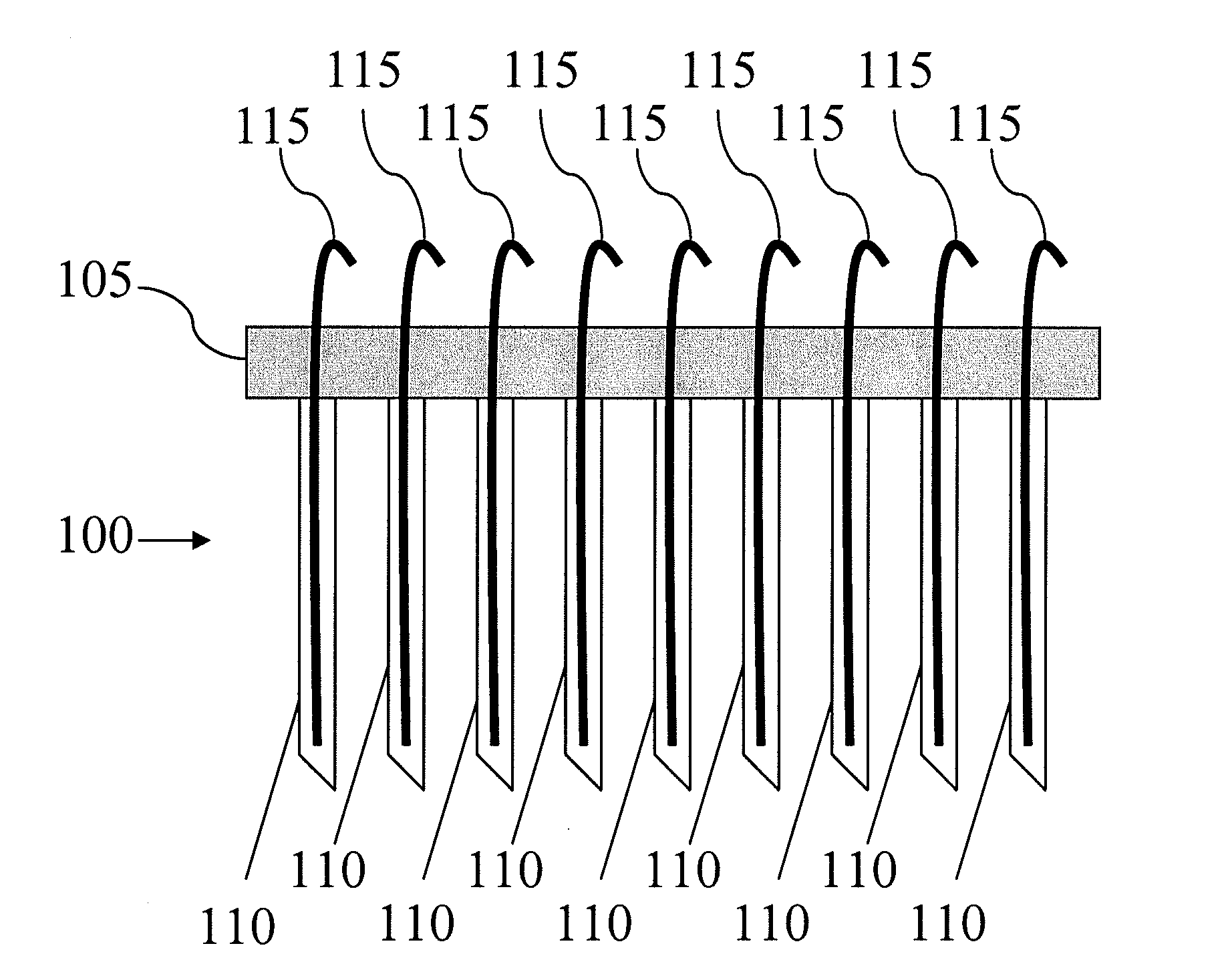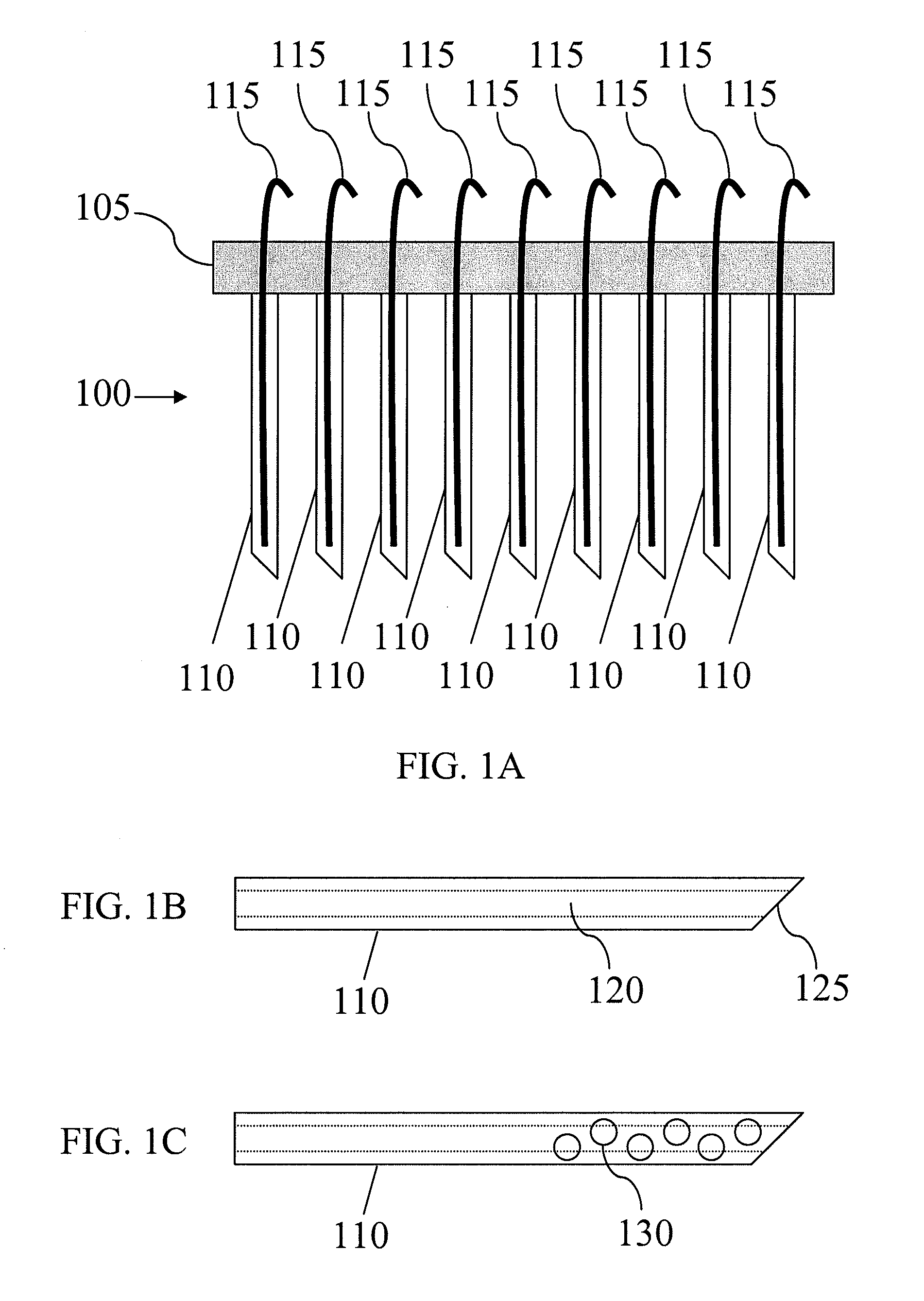Optical Array for Treating Biological Tissue
an optical array and biological tissue technology, applied in the field of optical arrays for treating biological tissue, can solve the problems of suboptimal blanching of the lesion, unwanted thermal injury to the epidermis, and reduction of the amount of heat produced, and achieve the effect of effective and uniform treatmen
- Summary
- Abstract
- Description
- Claims
- Application Information
AI Technical Summary
Benefits of technology
Problems solved by technology
Method used
Image
Examples
Embodiment Construction
[0038]A plurality of waveguides formed in an array pattern can be inserted into biological tissue. The waveguides can be positioned in the tissue so that a subsurface volume of the biological tissue can be treated. Electromagnetic radiation is delivered using the waveguides to treat the subsurface volume.
[0039]In certain embodiments, a treatment can be for one or more of the following indications: acne, erythema, fat, cellulite, oily skin, pigmented lesions, pores, scarring, vascular lesions (including port wine stains), pigmented lesions, and wrinkles, as well as for skin rejuvenation, hair removal, and hair regrowth. Target chromophores can include water, fat, collagen, blood or a blood component, melanin, or other commonly targeted skin chromophores in cosmetic and dermatologic treatments. Vascular lesions, such as PWS, telangiectasia and hemangiomas, are characterized by abnormally enlarged blood vessels. Pigmented lesions are non-vascular disfigurements of the skin caused by an...
PUM
 Login to View More
Login to View More Abstract
Description
Claims
Application Information
 Login to View More
Login to View More - R&D
- Intellectual Property
- Life Sciences
- Materials
- Tech Scout
- Unparalleled Data Quality
- Higher Quality Content
- 60% Fewer Hallucinations
Browse by: Latest US Patents, China's latest patents, Technical Efficacy Thesaurus, Application Domain, Technology Topic, Popular Technical Reports.
© 2025 PatSnap. All rights reserved.Legal|Privacy policy|Modern Slavery Act Transparency Statement|Sitemap|About US| Contact US: help@patsnap.com



